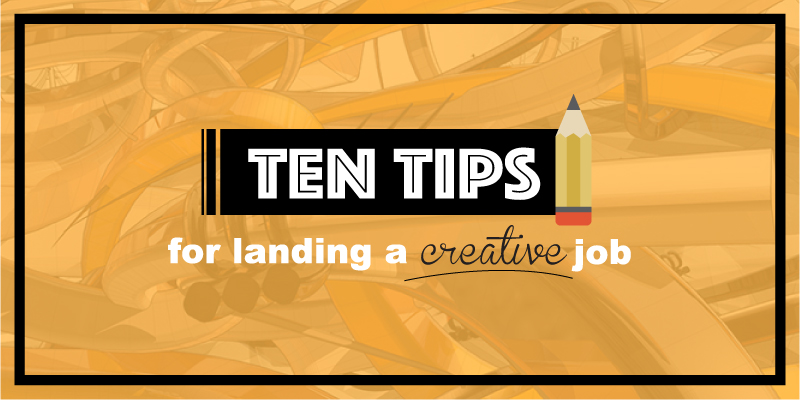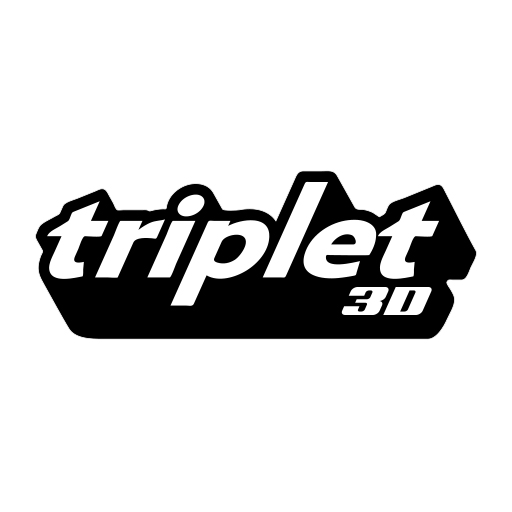
10 Tips for Landing a Creative Job
You’re creative and you know that is the type of job you want to secure. But, how do you go about doing it? As a recent graphic design graduate, I’ve been through quite a few interviews and although every interview is different, there are a few things that are pretty standard across the board. Use these tips to get yourself on the right foot to landing your dream job.
1. Build Your Skillset
This should be fairly obvious, and of course your first step. Learn the ins and out of your field; learn the basics, history, trends, computer programs, and any additional skills necessary to perform the type of job you’re looking for. Take classes at a college, use online video tutorials (youtube, Lynda.com, and digitaltutors.com are all good resources), read books and attend workshops. Most job requirements will ask for a college degree, but with the right skillset and equivalent experience, that can be bypassed. The more defined your skillset is, the more marketable you are.
2. Define Your Personal Brand
You’ve got the skills, now you need to market yourself to get noticed. This is where you can really get creative, which is exactly what you are trying to show a prospective employer that you are. Personal branding isn’t just for freelancers. Think of yourself as a product, you have the skills, now use this part to build up your brand’s value and tell your story.
Your personal branding is your most important, and on-going, project. It’s all about demonstrating and communicating your value. As you get better and gain more experience, your value will continue to go up, so always keep building on this. Treat this like a design brief. Create a style guide for your product – design a logo, choose a color palette, select a few complimentary fonts, create a few brand marks (logo variations, signature, symbols, etc.). Once you have a defined style, carry it throughout all of your promotional materials, including your resume, portfolio, website, etc. This shows a potential employer that you’ve really put thought into presenting yourself, but will also show your personal style and creativity.
3. Your Calling Cards
Treat your resume and portfolio like your calling cards. They show what you have done, what you can do, and will be required by 99.9% of employers. Again, get creative. Tear up your standard Microsoft Word resume, and show off your skills from the start. Illustrations, infographics, and creative layouts are all welcome here. Competition is fierce in these fields, so this is a good way to make an impact and stand out among the others. Need a little inspiration? Do a google search for creative resumes or become a Pinterest member and you’ll have never-ending inspiration. Creativity is great, but do remember to keep it professional too.
Now, although a digital portfolio is important, you need a physical portfolio too. Use this wisely. You do not have to include every piece you have created, and you shouldn’t. Include your best pieces. The better work you have in your portfolio, the better the job you can land. It’s a good idea to have a nice portfolio book with inserts, so you can easily add or remove pieces. You could also create different portfolios for different interviews. Use nice, clear images and include concise descriptions of your projects. Your portfolio is there to show your potential employer than you CAN do the job, and you can do it well. If you don’t have a lot, or any, professional experience, it is absolutely ok to include school projects you are proud of, as well as personal projects.
4. Promo Kit
Creating a promo kit is an easy way to get your name out there. You can find some really great ideas on Pinterest and Behance for promo kit ideas, but use them as inspiration and come up with something fresh and unique to you. Use your personal brand style as your guide for these pieces. Include your business card, some samples of your work (try a mini portfolio, or prints of your best pieces), an intro of yourself, and anything else you think would help promote yourself. Use this kit to distribute at networking events, to send to companies you would like to work for/with, and as leave behinds at interviews.
5. Build an Online Presence
Be Resourceful! There are so many ways to get your work noticed online. First off, have an online portfolio, either build a website, or use an online portfolio site such as Behance, which is a free portfolio site where you can share your work and network with other creatives. Social media is also a very powerful way to share your work and get discovered. Pin your designs on Pinterest, which can link back to your website, tweet about your designs, start a facebook page for your brand and post new designs, blog posts. etc., and connect on LinkedIn with other creative and share your work.
6. Network, Network, Network!
Networking is so important. You never know when someone will have an opportunity available, a collaboration, great idea, or are just a good resource. Join a design organization, attend events and workshops, and make friends with colleagues or other students if you are still in school.
7. Get Experience
Armed with a killer portfolio, a unique set of skills, and now some professional experience – you’re in! There are so many opportunities available for gaining experience in your field. Internships are a great way to gain experience, check job boards, ask companies you admire, or ask around at networking events. If an internship isn’t an option for you, you can volunteer, enter competitions, or freelance. The more experience you can get, the better!
8. Job Search
When looking for jobs, you can do the usual google search for jobs in your area, if you are in school, you can use your schools job board, but also don’t forget to use your networking contacts. Let them know you are searching for a job, you never know who might have a lead for you. Send your promo kit out to companies that you would like to work for, even if they aren’t currently hiring, who knows they may like to use you for freelance opportunities.
9. The Interview
You landed the interview. Now get totally prepared. Have copies of your resume printed and your portfolio tweaked and perfect and know where things are in your portfolio so you can easily reference projects. Do as much research as you can on the company, know what they do, who their clients are, etc. Practice typical interview questions and answers, make a list of questions you have, and come armed with some creative ideas for the company and the role.
10. Check off All of the Above…and Repeat
Remember, creative jobs are always changing. New programs, new trends, new everything. Keep learning new skills, stay up to date on new programs, keep updating your resume and portfolio, and stay current on trends.


There are no comments so far